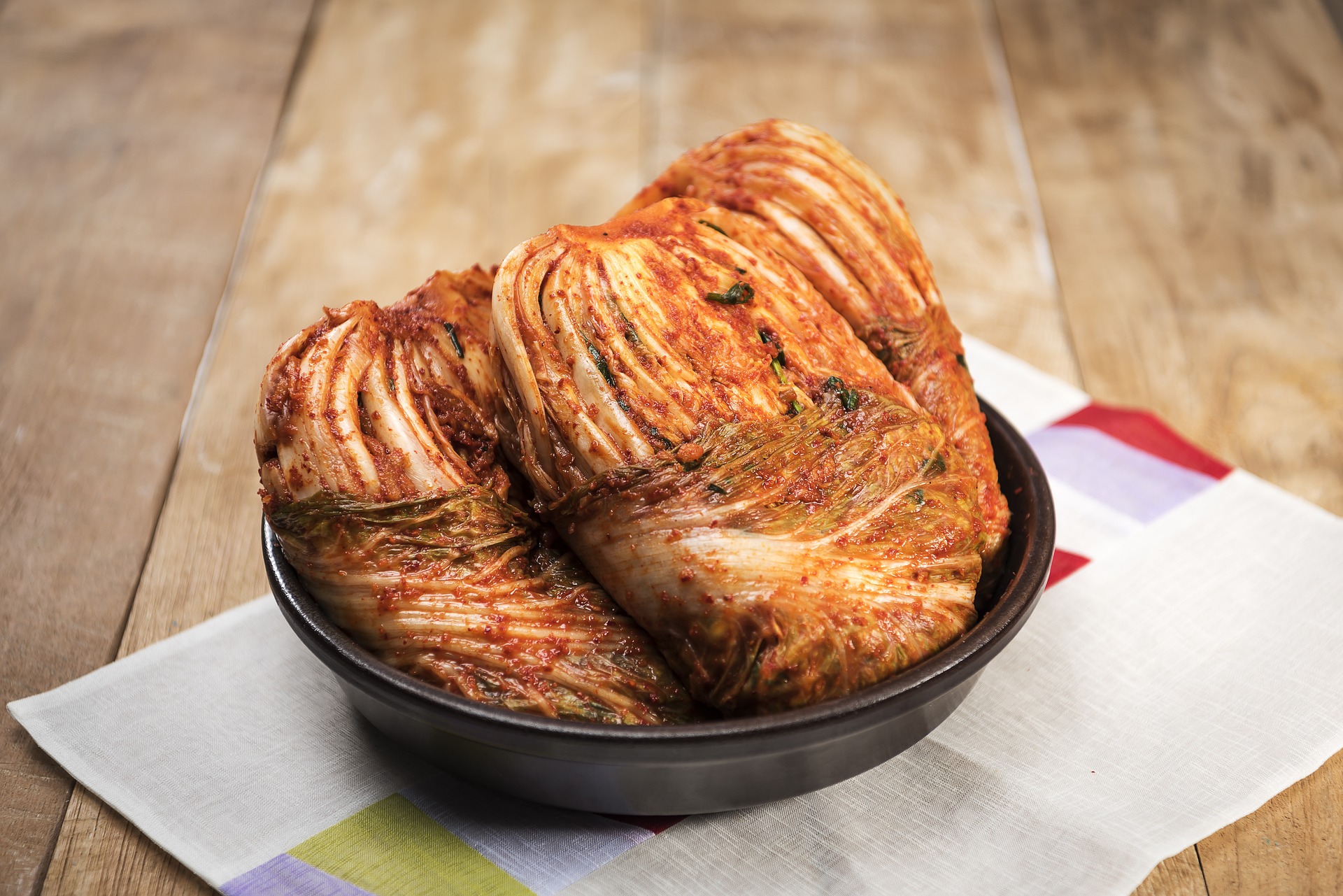Kimchi is a traditional fermented dish from Korea that has been consumed for over a thousand years. It is made by fermenting vegetables such as napa cabbage, radish, scallions, or cucumbers, along with spices, salt, and other ingredients.
Kimichi has to ferment for 24 hours or longer.
Ingredients

The origins of kimchi can be traced back to ancient times, when people in Korea used to preserve vegetables by salting them and storing them in earthenware jars. Over time, this process evolved into the fermentation of vegetables with spices, which created a delicious and healthy food.
Kimchi was an important part of the Korean diet, particularly during the winter months, when fresh vegetables were scarce. It was also considered a medicinal food, believed to help prevent illness and improve digestion.
In the 16th century, kimchi became even more popular in Korea after the introduction of chili peppers, which added a spicy kick to the dish. The use of chili peppers also had health benefits, as it helped to increase circulation and improve digestion.
Recipes using kimchi:
Directions
- Cut the cabbage in half and rinse it well under cold water.
- Make slice into middle of the stems in to half of the length of cabbage.
- Place cabbage into big bowl and salt every leaf well.
- Set aside for two hours, cabbage will start to loose water.
- Rotate cabbage every 30 minutes, to allow water to drip in to bowl better.
- Combine the water and glutinous rice flour in a small pot.
- Mix well and heat for about 5-10 minutes or until it starts to simmer.
- Incorporate the sugar and cook for minute, stirring constantly.
- Remove from the heat and cool off completely.
- Incorporate garlic, ginger, onion, fish sauce and chilli in to slurry.
- Combine until the mixture turns into a thin paste.
- Add the carrot, radish and green onion.
Traditionally cabbage is kept whole and paste is applied manually between each leaf.
To simplify you can cut cabbage in to smaller pieces and just mix it with paste.
- Spread some kimchi paste on each cabbage leaf.
- Place the cabbage into the glass jar.
- Add any remaining paste on the top of the cabbages.
- Make sure to press the cabbage to eliminate any air bubbles.
Fermentation time under the room temperature will determine intensity of sourness.
- Cover with the lid, but do not seal, so air can escape.
- Keep fermenting under room temperature for 24 or longer.
- Afterwards, seal loosely again, and place in to the fridge.
- Fridge will not stop the fermentation of kimchi but it will slow it down significantly.
- As fermentation in the fridge is slower, sooner you place kimchi in fridge longer it keeps.
Ingredients
Directions
- Cut the cabbage in half and rinse it well under cold water.
- Make slice into middle of the stems in to half of the length of cabbage.
- Place cabbage into big bowl and salt every leaf well.
- Set aside for two hours, cabbage will start to loose water.
- Rotate cabbage every 30 minutes, to allow water to drip in to bowl better.
- Combine the water and glutinous rice flour in a small pot.
- Mix well and heat for about 5-10 minutes or until it starts to simmer.
- Incorporate the sugar and cook for minute, stirring constantly.
- Remove from the heat and cool off completely.
- Incorporate garlic, ginger, onion, fish sauce and chilli in to slurry.
- Combine until the mixture turns into a thin paste.
- Add the carrot, radish and green onion.
Traditionally cabbage is kept whole and paste is applied manually between each leaf.
To simplify you can cut cabbage in to smaller pieces and just mix it with paste.
- Spread some kimchi paste on each cabbage leaf.
- Place the cabbage into the glass jar.
- Add any remaining paste on the top of the cabbages.
- Make sure to press the cabbage to eliminate any air bubbles.
Fermentation time under the room temperature will determine intensity of sourness.
- Cover with the lid, but do not seal, so air can escape.
- Keep fermenting under room temperature for 24 or longer.
- Afterwards, seal loosely again, and place in to the fridge.
- Fridge will not stop the fermentation of kimchi but it will slow it down significantly.
- As fermentation in the fridge is slower, sooner you place kimchi in fridge longer it keeps.
Added 2 tbs gocharu, used mixer to remove lumps from slurry, squeezed water from carrot and radish